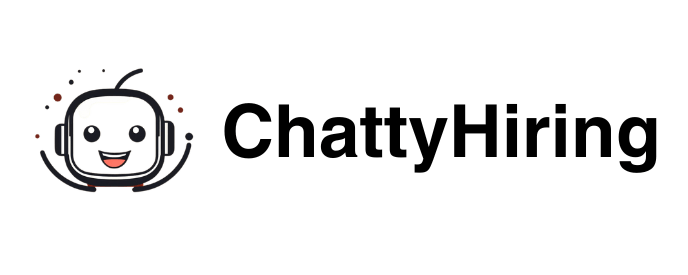Evaluating communication skills with AI involves using advanced algorithms to analyze verbal, non-verbal, and written interactions objectively. AI-powered tools assess tone, clarity, empathy, and message effectiveness by transcribing conversations and scoring them based on specific communication behaviors. This allows organizations to move beyond subjective judgment and obtain consistent, data-driven insights.

These AI systems can evaluate multiple dimensions at once—such as listening ability, emotional intelligence, and language proficiency—using natural language processing and speech analysis. By doing so, they provide actionable feedback that supports hiring, training, and leadership development.
The technology also adapts to different roles and industries, ensuring relevant benchmarks and reducing bias against accents or non-native speakers. Integrating AI into communication evaluation helps organizations identify strengths, uncover gaps, and improve overall effectiveness in real-world interactions. For more detail on leading tools, see this overview of top communication evaluation platforms.
Key Criteria for Evaluating Communication Skills with AI

Effective communication depends on multiple factors including clarity, tone, vocabulary, and adaptability to context. AI tools analyze specific elements of spoken and written language, as well as softer aspects like empathy and interpersonal ability, to provide measurable insights. Evaluation focuses on precision, fluency, and relevance to gauge overall communication competence.
Verbal Communication Evaluation
AI measures verbal communication by analyzing tone, pace, volume, and clarity. It detects hesitations, filler words, and pronunciation to assess fluency and confidence. Crucial cues such as intonation and stress help determine the speaker’s emotional engagement and intent.
Speech analysis often includes sentiment detection and real-time feedback on articulation. This helps identify areas like empathy and assertiveness in interaction. AI systems also simulate conversations to evaluate adaptability in diverse scenarios.
This approach offers objective, scalable insights beyond typical human bias. It is particularly useful in remote hiring or training environments where spoken interaction quality matters.
Written Communication Assessment
Written communication evaluation focuses on grammar, coherence, conciseness, and tone appropriateness. AI scans text for spelling errors, sentence structure, and logical flow. The system also measures vocabulary diversity and clarity, aiming to ensure the message is easily understood.
It assesses style consistency to match specific contexts, such as formal emails or casual reports. Advanced AI can detect sentiment and intent behind written responses, offering a deeper layer of communication assessment.
This method provides quantitative data to compare candidates or employees objectively, improving selection and development processes.
Language Proficiency Evaluation
Language proficiency evaluation centers on assessing grammar, vocabulary range, syntax, and pronunciation accuracy. AI tools compare language use against native or reference standards to score fluency.
They evaluate how well individuals understand and respond to prompts, including idiomatic expressions, cultural references, and complex sentence structures. This allows for measuring both receptive and productive language skills.
Many AI systems integrate metrics for accent reduction and oral comprehension to improve global communication standards. This is essential for roles requiring multilingual capabilities or high language precision.
Interpersonal and Soft Skill Analysis
AI assesses interpersonal skills by examining tone, empathy, and engagement levels during conversations. It analyzes emotional intelligence through voice modulation and response patterns to gauge understanding and rapport-building ability.
Soft skills such as adaptability, active listening, and conflict resolution emerge through contextual analysis in AI-driven simulations. Systems track how individuals navigate social cues and manage stress or disagreement.
This evaluation captures nuances beyond words, focusing on a person’s ability to connect and collaborate effectively in professional settings. It supports targeted coaching for communication improvement aligned with workplace demands.
Soft Skills Evaluation AI Criteria-Based Breakdowns
Ultimate Guide to Communication Skills Assessment
AI-Powered Assessment Tools and Implementation Strategies

AI-powered systems provide objective, data-driven insights into communication skills, enabling precise evaluation beyond traditional methods. Their integration into talent workflows requires strategic planning to align assessments with organizational goals and employee growth initiatives.
AI-Powered Assessment Tools
These tools analyze verbal and non-verbal cues using machine learning algorithms to assess clarity, tone, pacing, and engagement in communication. Some platforms evaluate spoken responses in real-time, offering quantifiable scores that reduce subjective bias.
Popular AI assessment tools can:
- Measure fluency and pronunciation
- Detect sentiment and emotional cues
- Provide automated scoring with detailed analytics
Limitations include difficulty assessing spontaneous speech and the lack of nuanced feedback. Combining AI with human insight enhances reliability. Tools like AI-enabled speaking assessments offer actionable metrics but often require complementary peer or expert review to deepen understanding of communication effectiveness.
Integrating AI Assessments into Talent Management
Effective implementation begins with identifying key communication competencies aligned with job roles. AI assessments can then be customized to measure these skills during recruitment or performance reviews.
Organizations often use AI assessments to:
- Screen candidates in early interview stages
- Benchmark employee communication against role requirements
- Inform promotion and succession planning
Integration requires training HR professionals to interpret AI-generated data and combining it with traditional evaluations. Ethical considerations, such as data privacy and bias mitigation, must be addressed. Transparent communication about how AI assessments influence talent decisions supports acceptance and trust within the workforce.
Leveraging AI for Employee Development Plans
AI assessment outputs provide granular feedback that informs personalized development plans targeting specific communication gaps. Automated reports highlight strengths and areas for improvement to guide coaching and training.
Development plans using AI data typically include:
- Tailored learning modules focusing on identified weaknesses
- Progress tracking through follow-up AI assessments
- Integration with human-led mentoring for skill reinforcement
This approach enables continuous, scalable development aligned with organizational needs. It promotes objective progress measurement and supports employees in refining communication skills critical to their roles. Combining AI insights with human guidance offers a balanced path for sustainable growth.
-

A passionate advocate for the future of HR innovation. With expertise in leveraging AI to revolutionize recruitment processes, Carlos has a clear vision: empower HR teams while creating meaningful candidate experiences.
View all posts




